In the fall, I start thinking about rich, thick soups and curries to stave off the chill that’s starting to roll in as the last warmth of summer fades.
I love filling my house with the heady and intoxicating smells of warming spices and pungent herbs. They heat the belly and blood and are naturally supportive through this cooler, darker season.
Many of these delicious spices have awesome anti-inflammatory properties, as well as help digestion.
And the star of this curry, butternut squash, is packed to the gills with super beneficial nutrients and minerals.
It’s the perfect late summer-to-fall recipe built to nourish you with foods of the season, and is wonderful throughout the remaining cold weather months.
Not to mention that it’s easy, super flavorful, and will make A LOT.
Feed yourself for most of the week or your family for a night or two.
And the leftovers just get better and better!
With curry in the name, you’ve probably guessed that this recipe is inspired by traditional Indian cooking.
What is curry?
Let me start by saying that whenever I see recipes that have “curry” in the title and rely solely on “curry powder” as the spice mixture, I’m a bit saddened.
True curry has LAYERS of spices and flavors, added at different times to create depth and harmony.
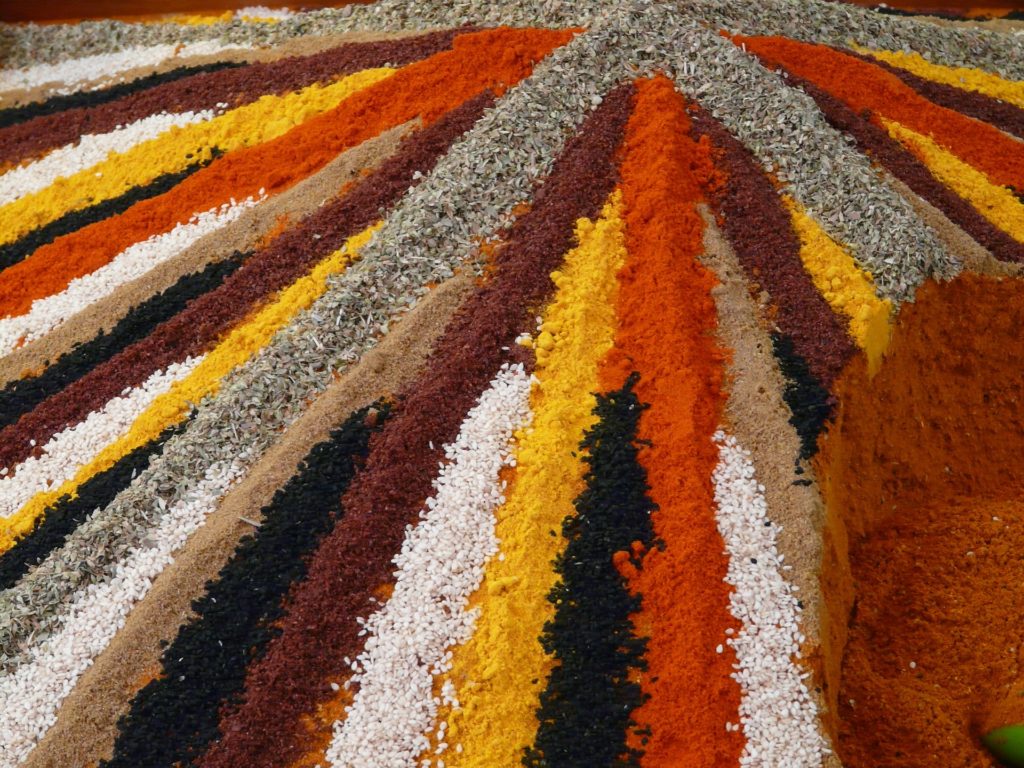
It’s a night-and-day experience taste-wise when you use the full range of spices that you find in traditional recipes.
Now I know what you’re thinking.
This all sounds great and super tasty, but it also sounds like it takes a lot of time.
Usually, you’d be right! Traditional Indian cooking is done over a few hours, adding spices and ingredients here and there.
The results are mindblowingly delicious, but sometimes the time it takes to make just isn’t a reality for folks.
I’ve tried to take the best of both worlds into this recipe by making it a slow cooker dish.
With the slow cooker, it’s pretty hands off.
There’s some prep for the veggies, of course, but the slow cooker takes care of that magical layering of spices, giving them time to melt into the ingredients and create a delectable dish!
Curry doesn’t have to mean spicy.
I think many people immediately equate the word curry with burn-your-mouth-off hot.
While many curries can be quite spicy, not all are meant to be (massaman curry is a great example).
Here’s the BEST part about this recipe: you can adjust all the spice levels to taste.
When you use a pre-made packet, you have no control over the flavor and spiciness of the mixture.
Here, you have all the control.
It’s very easy to adjust your spice level preference in this recipe.
If it seems like it’ll be too spicy for you, by all means, knock it down a bit!
Remember, there’s a lot of starch from the squash, cauliflower, and chickpeas, that will absorb tons of the spice flavor, leaving the curry more mild than you might think.
Curry doesn’t have to mean exotic, hard-to-find spices.
You should be able to find every spice in this recipe in your grocery store, especially if you are lucky enough to have one with a bulk spice section.
And if you can’t, no worries! I’ve included links in the recipe section to those that might be harder to find.
The last spice in the recipe, and probably the most difficult to procure, is garam marsala.
It’s a fabulous blend of many herbs including black pepper, cinnamon, coriander, chiles, and cardamom and it has a rich, aromatic, somewhat sweet flavor.
Garam marsala is best when it’s added in the last few minutes of cooking.
For this reason, it can be tempting to skip seeking it out.
Trust me, it’s worth ordering this one if your store doesn’t have it.
It brightens the entire dish with its lovely combination of flavors and really takes it to another level.
I hope I have decreased any fears of overwhelm around this recipe!
You spend a little time up front with prep, and the slow cooker does the rest!
![]()
Let’s take a look at why this dish not only tastes amazing, but why it is so good for you!
You can skip down to the recipe if you want a quick preview!
Many of the spices are anti-inflammatory.
The herbs in the recipe have strong anti-inflammatory properties.
Inflammation gets a bad name.
It’s a crucial part of the healing process.
Inflammatory markers are the ones that tell our immune system, “Hey! A little help over here!"
Without it, we wouldn’t mount an immune response to clean up whatever baddie was invading.
Now when these immune cells come to the area, they release inflammatory markers of their own, signaling even MORE immune cells.
It’s called the inflammatory cascade.
And usually it’s a great thing.
But sometimes, inflammation gets a little out of hand.
Maybe our immune system is too weak to mount a full response, and the irritant never gets swept up and moved out.
Or, what’s very common in the modern world, is that we are constantly exposing ourselves to inflammatory chemicals, foods, and emotional environments.

We create this chronic, ever-present inflammation on our systems that drains our resources.
And sometimes, we have an acute injury (like a sprained ankle) or surgery to recover from, or we just want to speed up the healing process in general.
That’s where anti-inflammatory herbs come in.
Many of them not only help quell inflammation, but they also improve circulation, moving inflammatory mediators away from the site of irritation and into the liver to be detoxified.
We don’t want to completely get rid of inflammation, but there are times where we’d really like to moderate it.
Inflammation is a huge topic, and I’m sure I’ll circle back to it and write a whole post one of these days!
But for now, let’s take a look at these herbs!
Turmeric
Turmeric is the spice in this curry recipe that gives it it’s yellow color.
Be careful when you use it!
It’s traditionally used to dye fabrics so it’s sunny yellow color might stick to you and your clothing a bit longer than anticipated.
I have several shirts that are now cooking shirts, as they are spattered with turmeric.
Turmeric is widely known as an anti-inflammatory giant. It’s been very well studied in its ability to reduce inflammation through it’s main molecule, curcumin.
This means it’s great to treat inflammatory conditions like arthritis, joint pain, chronic pain, psoriasis, and inflammatory bowel diseases (ulcerative colitis, Crohn’s, IBS), among others.
It’s also been shown to be as effective as pharmaceuticals in certain diseases, but without the side effects.
It’s currently thought that this low-grade, chronic inflammation so many of us experience is the beginning of cancer. Turmeric has been shown to be on par with chemotherapy drugs in its ability to prevent cancer cell proliferation.
This recipe does not contain a therapeutic dose of turmeric (you’d need to take some supplements), but it is a great way to get some in your system through your diet!
Ginger
Ginger contains anti-inflammatory compounds known as gingerols.
Sometimes I really love it when scientists name things in a simple way!
Ginger has been a favorite amount joint pain sufferers, and has been shown in research to decrease pain in knee pain patients.
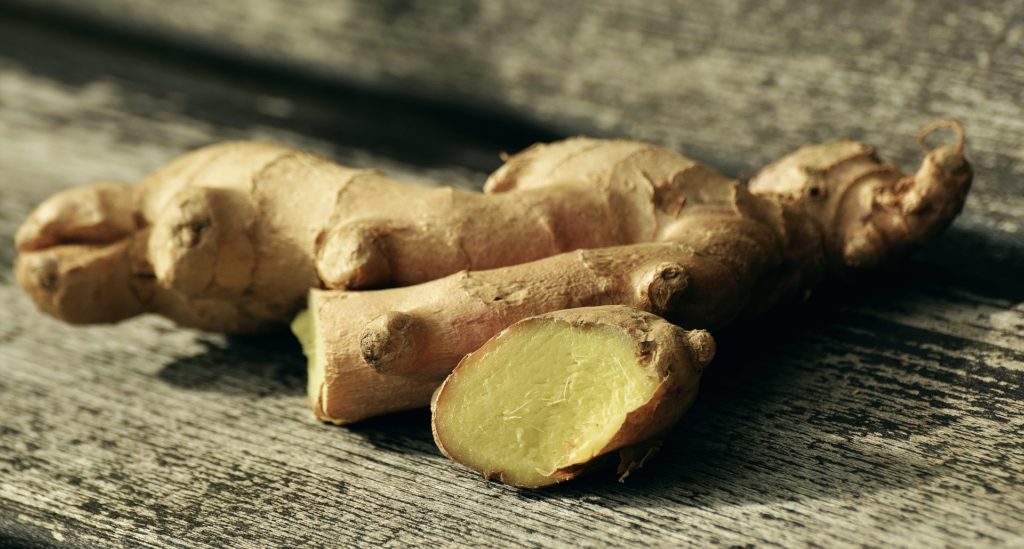
A study published in the February 2005 issue of the Journal of Alternative and Complementary Medicine shows that these gingerols suppress pro-inflammatory compounds and can help produce synviocytes (cells that make up the lining of your joint capsule), chondrocytes (cells that make up cartilage) and leukocytes (immune cells).
It’s anti-inflammatory effects also help decrease the intensity and length of period pain.
Gingerols inhibit growth of colorectal cancer and ovarian cancer, as well as many other cancers with it’s anti-proliferative effects.
Ginger also helps to preserve one of the body’s most important antioxidants, glutathione.
In short, yay ginger!
Garlic
Garlic contains tons of strong sulfur compounds that help decrease inflammation, making it a great herb to help out in chronic pain cases.
It is well known for its ability to lower cholesterol levels.
Cholesterol is a marker for inflammation in the cardiovascular system, and the antioxidants in garlic help to neutralize free radicals that cause damage to the blood vessels.
When the load of inflammation is lowered, cholesterol decreases.
It has also been shown to decrease the likelihood of clots through it’s anti-inflammatory action.
Garlic is remarkable in that it collects selenium from the soil, more so than other plants. Selenium is a critical nutrient in the formation of the most powerful antioxidant in the body, glutathione.
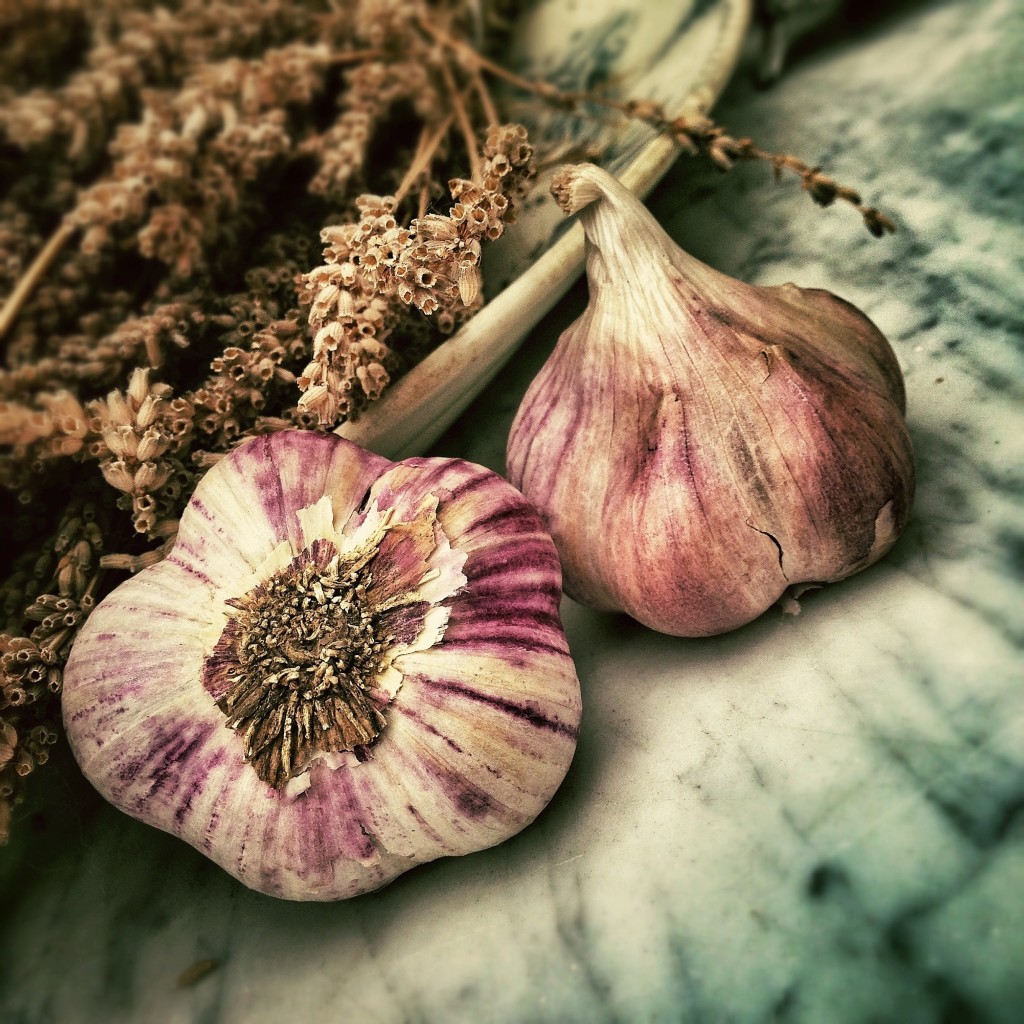
It's also rich in manganese which is a mineral necessary for the formation of several other antioxidants in the body.
Dr. Liz Tip: want to get rid of that garlic smell on your fingers after you’ve chopped it? Try coffee soap! There’s something about the compounds in coffee that neutralize the sulfuric smell of garlic. Here’s a link to my favorite kind.
Cayenne
Now we're getting to the spice!
Spicy food might seem to cause inflammation because of the irritated feeling it can leave behind after we've eaten it.
When consumed in excess, yes, this can be true! The irritation can lead to inflammation.
But, eating some in manageable amounts (which varies for everyone!) is actually anti-inflammatory and quite beneficial.
Cayenne contains capsaicin, which is the compound that gives the pepper it’s heat and pungency.
Capsaicin inhibits the inflammatory response by blocking the production of substance P, a molecule responsible for promoting the inflammatory process.
It’s an effective treatment for pain including arthritis, psoriasis, and nerve pain disorders like diabetic neuropathy.
Capsaicin cream is a popular topical application for arthritis (find photo), though the benefits of the cayenne pepper are more effective internally.
And several spices improve your digestion.
What do I mean by improved digestion?
We’ll take a look from both the western and eastern viewpoints.
Ginger
Yes, ginger is back!
From a Chinese medicine perspective, all foods have energetic properties that influence our digestive organs and body.
Ginger is warming and pungent. The main digestive organ in Chinese medicine, the spleen, likes to be slightly warmed to do its job well.
The better the spleen functions, or the better “digestive fire”, the better we feel because we’re receiving the nutrients and energy that we need.
It’s good to think of the digestive system like a gas burner on a stove.
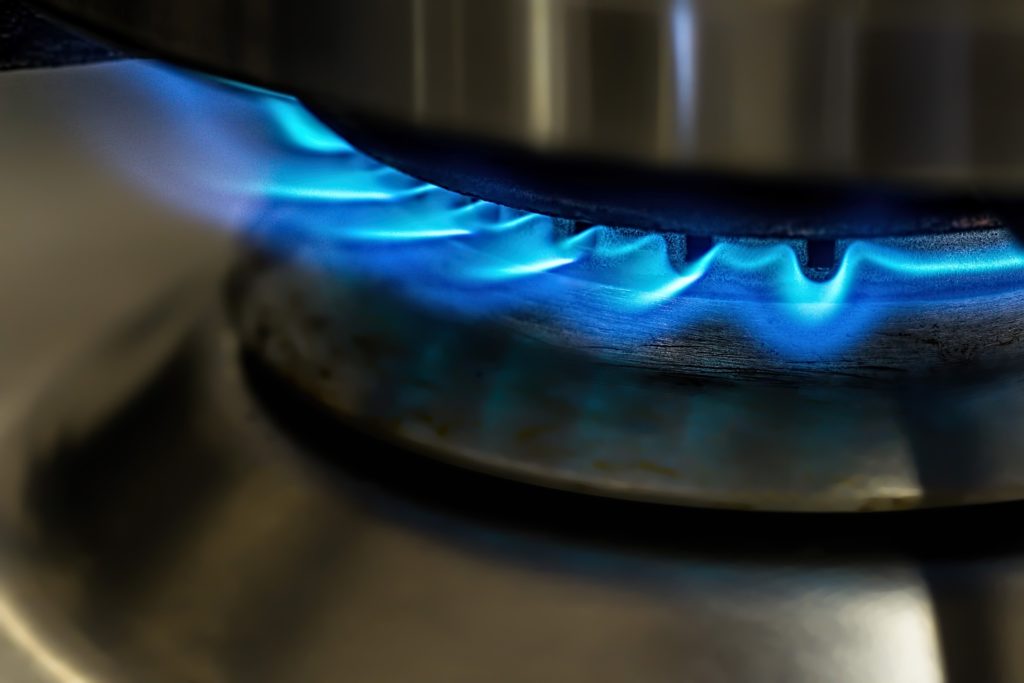
In the morning, we’ve just got a little pilot light going. We’ve let our digestive processes rest overnight, and now we’ve got to fire them up again.
Your morning food choices have a lot to do with how your digestion functions the rest of the day.
If you choose energetically cold, damp, heavy foods, you can squelch that pilot light out.
If you choose warming and energizing foods you turn the burner on and fire it up for the rest of the day.
Ginger is the perfect warming food in the morning for many people (there are individual variations, as some folks run very hot themselves or have a hot disease process happening where ginger would not be appropriate, like an ulcer).
Its pungent quality is excellent at breaking up mucus and phlegm.
Ginger has been studied to show that it is an effective treatment for nausea, making it a great morning sickness remedy.
And it’s why we reach for ginger ale to settle our stomachs when we’re sick!
Turmeric
Turmeric is a bitter herb. In smaller quantities, you won’t notice.
But if you’re like me, and attempt to make a “medicinal curry” with 2 tablespoons of turmeric (this recipe calls for 1/2 a teaspoon), you will quickly discover that it is quite bitter and you probably don’t want to eat what you just made.
Take it from me, if you want a medicinal amount of turmeric, go for the capsules.
Even though they don’t taste great, bitter foods can do wonders for your digestion. They stimulate stomach acid production so you’re better able to digest your food.
The bitter taste is cooling in Chinese medicine, so we can see how turmeric can be a wonderful addition to dishes that have warming spices, as it can bring a little balance to the energetic profile.
Fennel
Fennel is a carminative herb and is anti-spasmodic.
The carminative property means that fennel will help decrease gas and bloating.
If you’ve ever been to an Indian restaurant, you’ve seen that they usually have a bowl full of candied fennel up front. This is a wonderful after dinner snack, as it aids the digestion of your meal!
It’s anti-spasmodic property helps decrease any cramping that might occur during digestion.
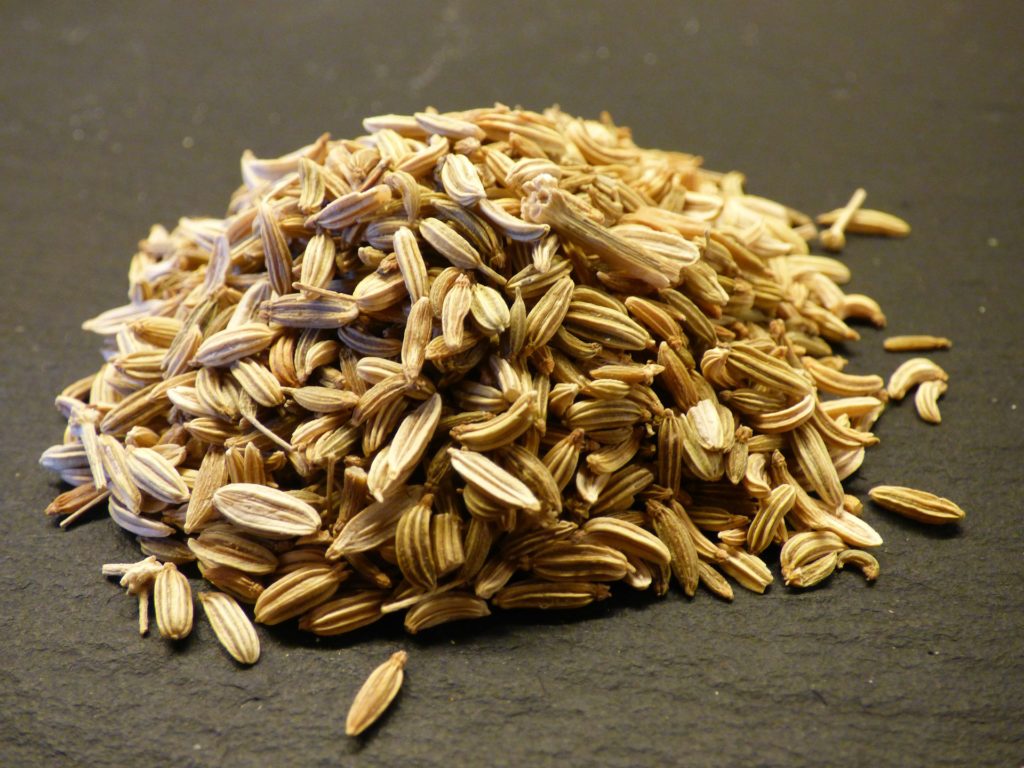
It also means that fennel relaxes the digestive system, making it easier to process the food you eat.
It’s a slightly warming and pungent spice in Chinese medicine, so again, helping improve digestion and dispelling dampness, mucus, and phlegm.
What’s so great about butternut squash?
Ah, the main event!
If the whole recipe is based around this vegetable, it better have some great stuff going for it!
And it does.
Butternut squash is rich in B vitamins and omega 3s.
Yes, omega 3s! Pretty cool you can get these from squash!
Specifically, you’re chowing down on alpha-lipoic acid, or ALA which has been shown to have great benefits for the circulatory system and nervous system, including reducing peripheral neuropathy.
It’s also high in vitamin A, vitamin C, and has more potassium per cup than a banana.
Butternut squash gets its color from carotenoids, which are strong antioxidants that help prevent cancer and enhance immune function, among other things.
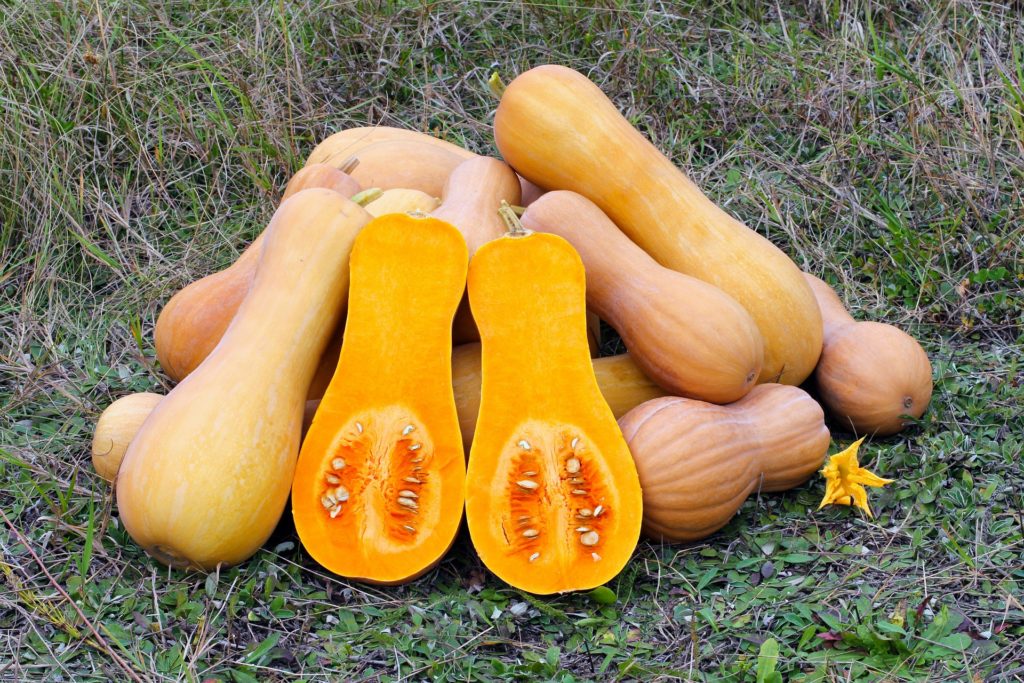
Eating this veggie gives you anti-inflammatory benefits from the compound cucurbitacins found in many winter squash varieties.
It also promotes blood sugar regulation and influences lipid metabolism to reduce obesity.
Tell me more about eating with the seasons.
Squash is in season in the late summer and throughout the fall, making it perfectly in season right now.
When you eat with the seasons, you’re not only eating in the most ecologically sustainable way, you’re also greatly benefiting your body by giving it foods it expects at certain times of the year with energetic properties that help to balance the seasonal influences.
Many foods in season in the fall have warming and pungent qualities.
Temperatures drop, so it’s great to take care of yourself with food that helps keep your internal thermostat balanced.
The fall is also a season of colds, and pungent foods help to combat the mucus and phlegm that accompany them.
How is this recipe paleo?
Let’s start with the definition of paleo.
The paleo diet is supposed to mimic what our ancestors ate.
Most sources out there right now will quote meat, fish, eggs, low-starch veggies, nuts, seeds, fruit and exclude grains and legumes completely.
Paleo focuses on wild foods that could be foraged, excluding high carb veggies like potatoes and corn that have been cultivated for thousands of years.
Personally, I think the exclusion of all grains, legumes, and several starchy vegetables is a bit extreme for a sustainable diet.
I’m all for getting rid of processed and refined carbs and minimizing high starch veggies if you feel like you might have a sensitivity.
But in general, we need carbohydrates to survive and produce enough serotonin (women are especially sensitive to serotonin swings) to remain happy and calm.
Much of what our ancestors actually ate is up for debate and still being discovered.
And I happen to believe that if we've been eating something for thousands of years, there's probably a great reason!
My recipe includes chickpeas, which are technically not paleo.
So if you are a paleo purist, feel free to omit them.
However, I might give this article a read; it makes some great points as to why legumes should, in fact, be included in the paleo diet, as there’s proof our ancestors ate them regularly.
I also suggest that this curry be served over rice.
Again, not paleo.
Feel free to eat it by itself, or serve it over some baked sweet potato or plantain.
Or serve it as a side dish to a lovely steak or fish.
Make it your own and adapt it to your needs!
Without further ado, here is the delicious recipe!
![]()
Slow Cooker Vegan Paleo Butternut Squash Curry
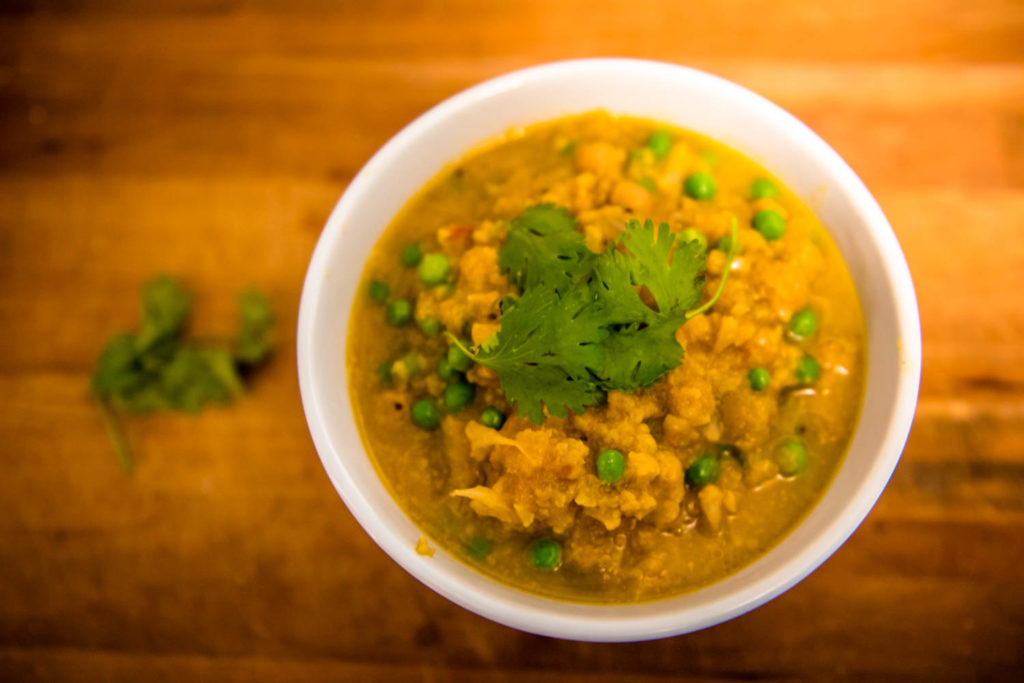
Inspired by Indian Cooking by Madhur Jaffrey, Tasty Yummies blog
Prep time: 30min
Cook time: 6 hours
Total time: 6 hours, 30min
Ingredients:
4tbsp olive oil
1tsp mustard seed
1tsp cumin seed
1/4tsp fennel seed
5-8 cloves garlic
1-2tbsp fresh ginger root peeled and chopped
4tbsp water
1tsp ground cumin
2tsp ground coriander
1/2tsp turmeric
1/2-1tsp cayenne
1/2tsp garam marsala
1.5 cups dried chickpeas (or about 2 cans of precooked chickpeas)
2.5 cups butternut squash, peeled and chopped into 1in pieces
2-3 tomatoes, diced
1 head cauliflower, broken into florets
1 onion, diced
3 cups stock, vegetable or chicken
2 tsp high mineral salt
1 package frozen peas
Cilantro for garnish
Instructions:
Place butternut squash, onion, cauliflower, chickpeas, stock, coconut milk and 1 tsp of high mineral salt in slow cooker and turn to high.
Roughly chop garlic and ginger. Combine in coffee grinder with 4 tbsp of water and blend into a paste.
Dr. Liz Tip: It’s common in Indian food recipes to use a coffee grinder to make your own spice blend. It’s nice to have a separate one, so your coffee doesn’t have a garlic aftertaste. Here’s the one I use.
Heat olive oil in a pan over medium high heat. When hot (but not smoking), put in mustard seeds, cumin seeds, and fennel seeds.
When seeds start to pop (this might be almost immediately), stir for a few seconds, then pour in the garlic and ginger paste.
Stir and fry for 2 minutes.
Add cumin, coriander, turmeric, and cayenne to the mixture and stir in for 30 seconds until incorporated.
Add the diced tomatoes and 1tsp high mineral salt and cook on medium high for 5 - 8 minutes, stirring constantly, until tomatoes are reduced and thickened.
This step really concentrates the flavor!
Add tomato mixture to the slow cooker and stir everything together. Cover and cook for 6 hours on high, stirring occasionally.
After 6 hours, turn off heat and stir in frozen peas and garam marsala. The peas will probably take about 5 minutes to cook through.
Garnish with cilantro, adjust salt and spiciness to taste.
Serve over rice and enjoy!
